Roasted Baby Carrots
Posted by admin on
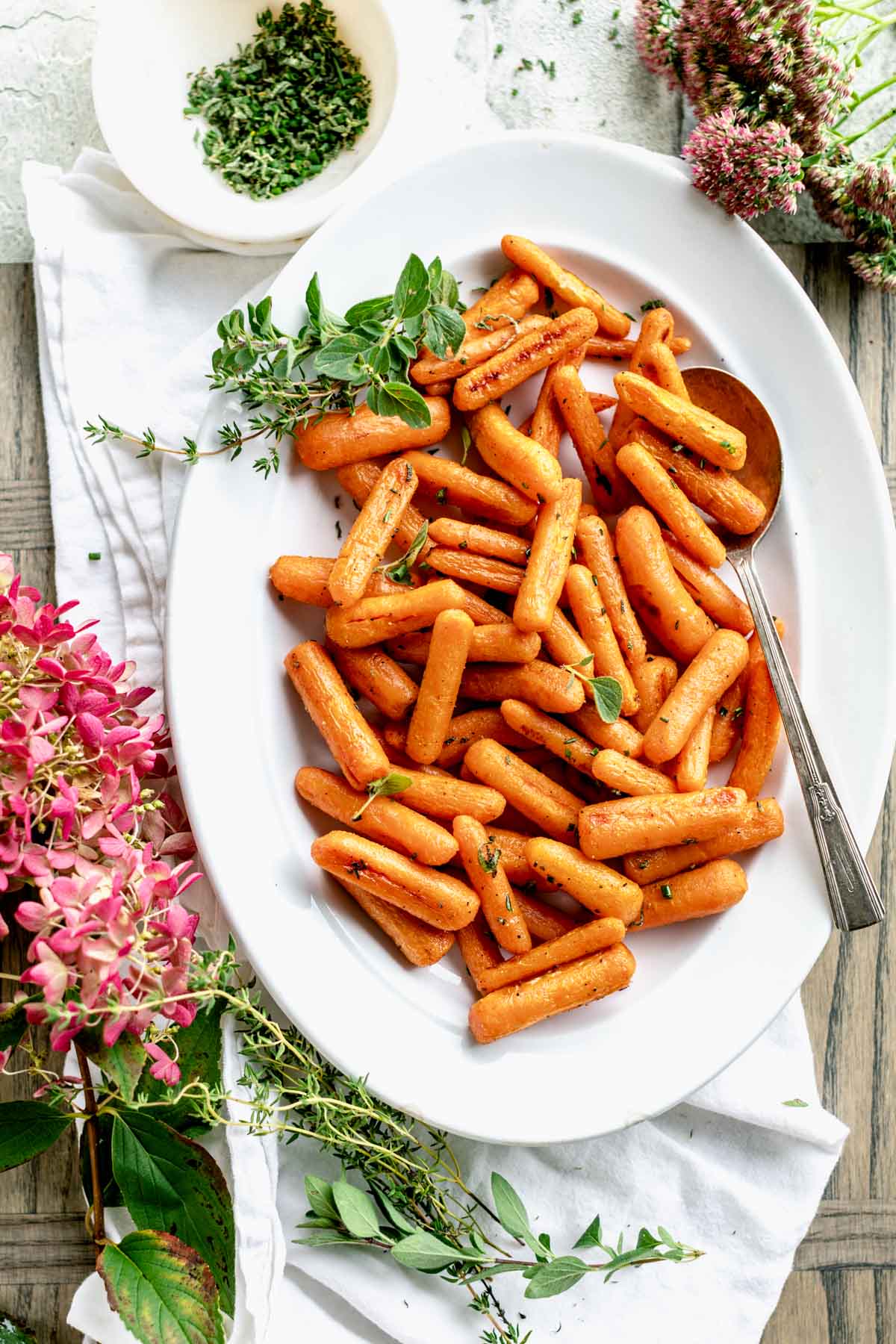
If you are looking for a super-easy way to cook baby carrots, then look no further! This recipe for simple roasted baby carrots works with bagged baby-cut carrots and “real” peeled baby carrots straight from the farm or garden. Read on to see step-by-step photos, a video and some tasty additions to make them even more flavorful!
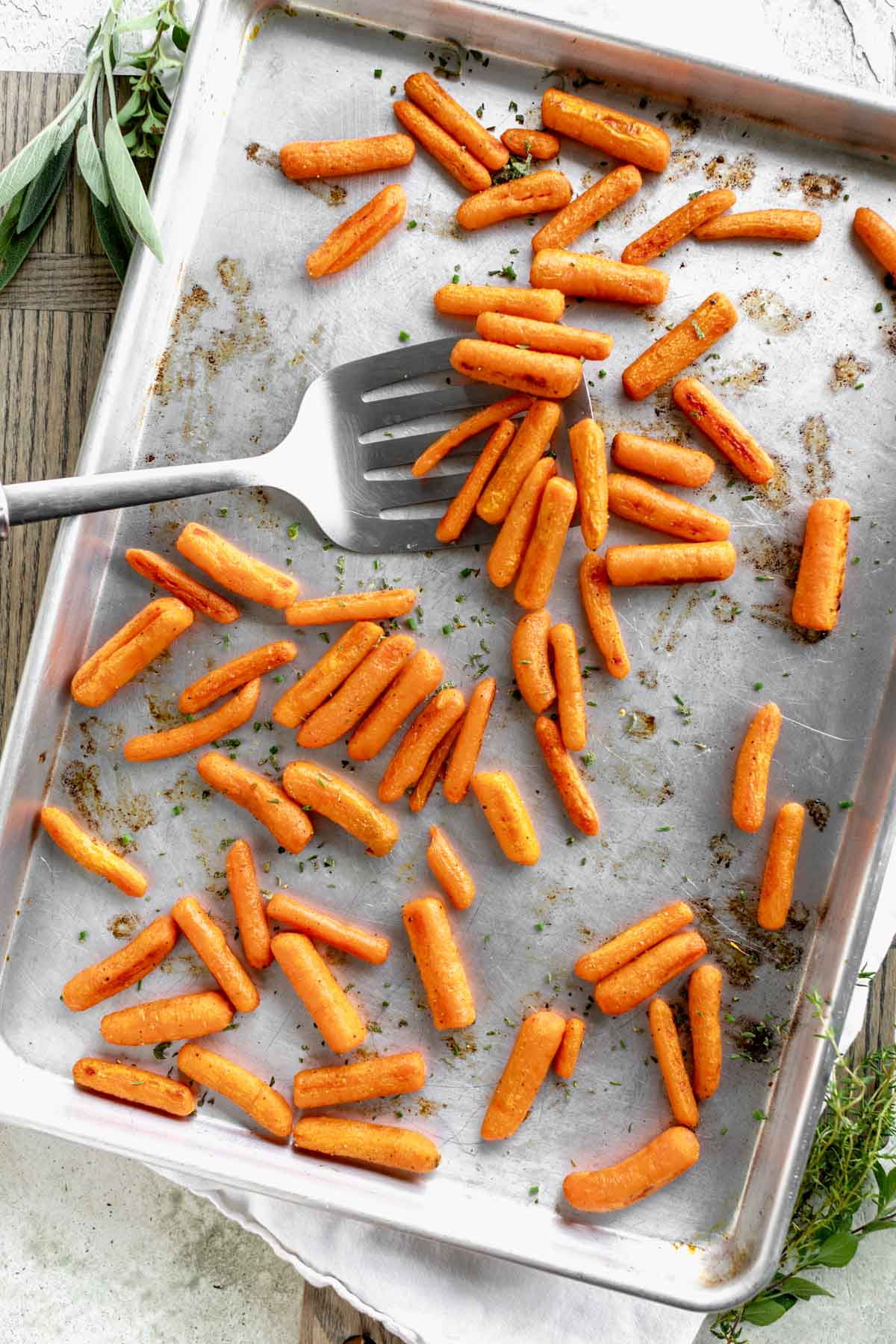
Why We Love This Recipe For Roasted Baby Carrots
Here at Healthy Seasonal Recipes, we are all about getting more fruits and veggies onto the family table. That’s why we share tons of easy and approachable veggie side dishes. Today we wanted to share the ultimate easy side dish, with absolutely no cutting required. The amount of time it takes to get these carrots into the oven is negligible and the results are delicious every time.
They are a great recipe for busy nights and also work well for holidays and special occasions.
These Roasted Baby Carrots are a perfect easy recipe for a weeknight meal because they are so fast! Simply toss the peeled baby carrots or baby-cut carrots with oil, salt and pepper, and then toss them into the hot oven on a preheated sheet pan. Then they only take about 20 minutes to roast and they come out sweet and tender.
These are great as is, and kids will really love them too! Additionally, I have included some quick instant flavor upgrades to make them more unique including pesto, herb and lemon harissa!
Ingredient Notes
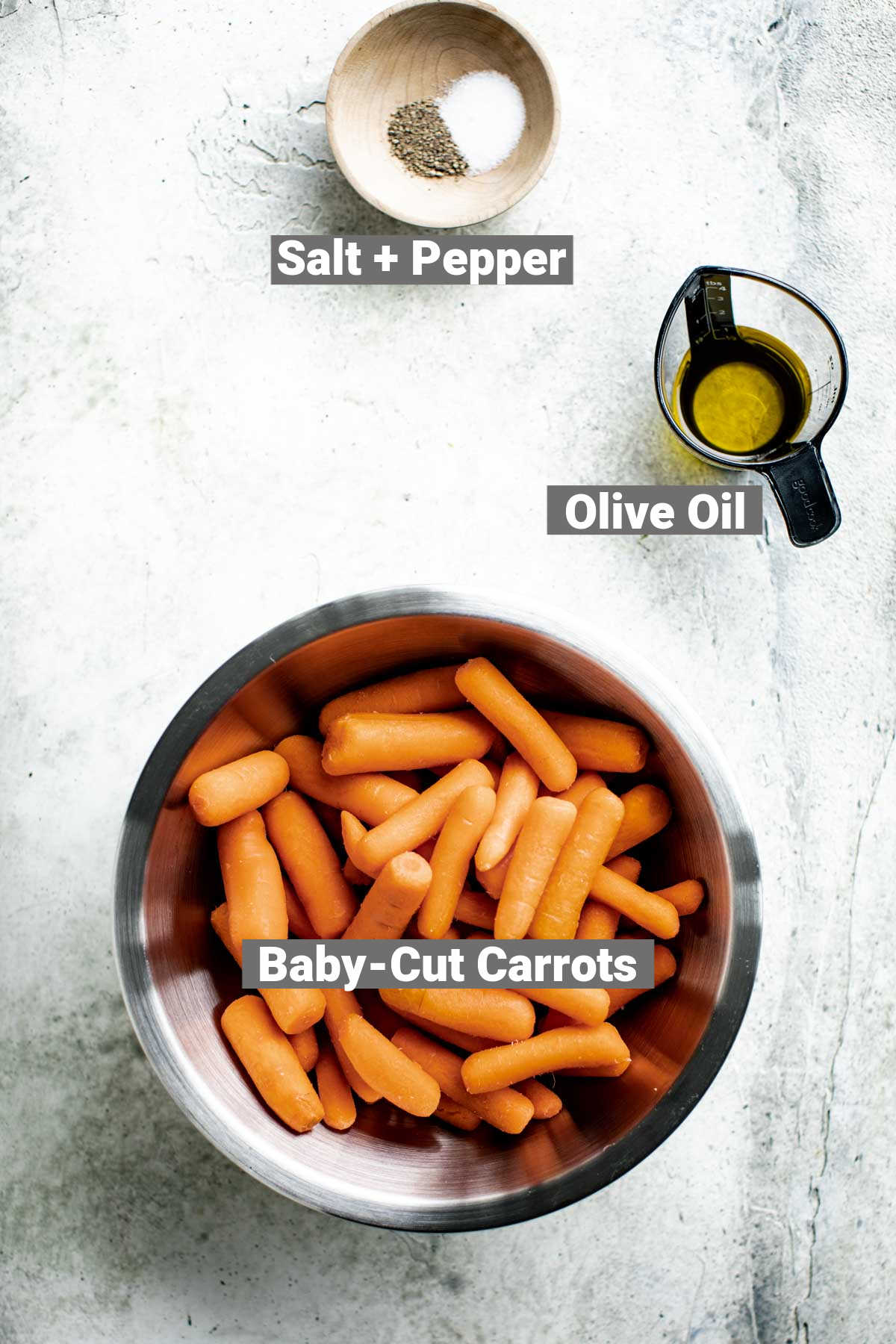
One Pound of Baby Carrots
This recipe works with both baby-cut carrots and whole peeled baby carrots. See the difference here.
You can use 1 pound bag of baby-cut carrots. Note that they will be packed with water to keep them moist and prevent them from drying out. You will need to drain any extra moisture and pat them dry with a clean paper towel if they are very wet.
It takes just a few minutes more, but fresh whole baby carrots can be substituted for peeled baby-cut carrots. Purchase one bunch (about 1 ¼ – 1 ½ pound) then peel and trim tops to about one inch before roasting. These are particularly festive for holiday meals and special occasions.
Many stores (including Trader Joe’s) sell pre-peeled baby carrots that are just as easy as baby-cut carrots.
Oil and Seasoning
- 1 tablespoon extra-virgin olive oil: You can swap in another oil such as avocado oil to change the flavors slightly. Melted coconut oil would be a nice touch!
- ¼ teaspoon salt and ⅛ teaspoon freshly ground black pepper: If using kosher salt read about substituting it for regular salt here.
Step-By-Step Instructions For This Recipe
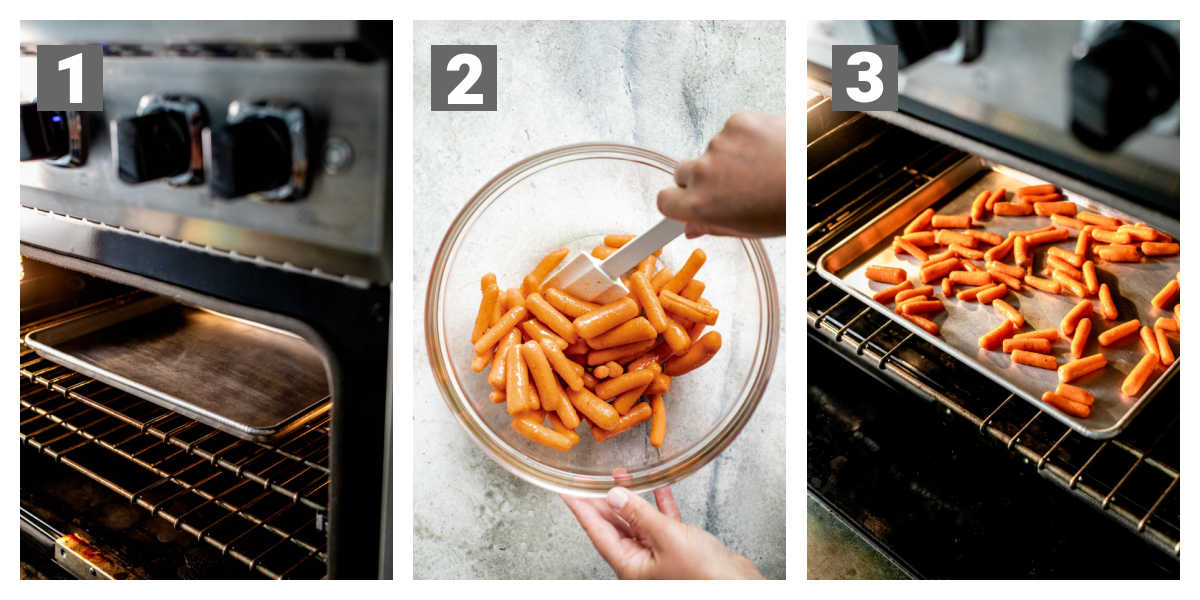
- Step 1: Place rack in the middle of oven along with a large, rimmed baking sheet. Preheat oven to 425 degrees F. Preheating the pan helps the carrots brown better!
- Step 2: Pat the carrots dry to remove any excess moisture which can inhibit browning. Toss the carrots with oil, salt and 1/8 teaspoon pepper in a large bowl until the carrots are completly coated.
- Step 3: Spread the carrots out onto the pan. Close the oven and roast, stirring once or twice, until browning and fork tender, 18 to 20 minutes. For whole baby carrots they will take up to 5 minutes longer.
Variations To Try
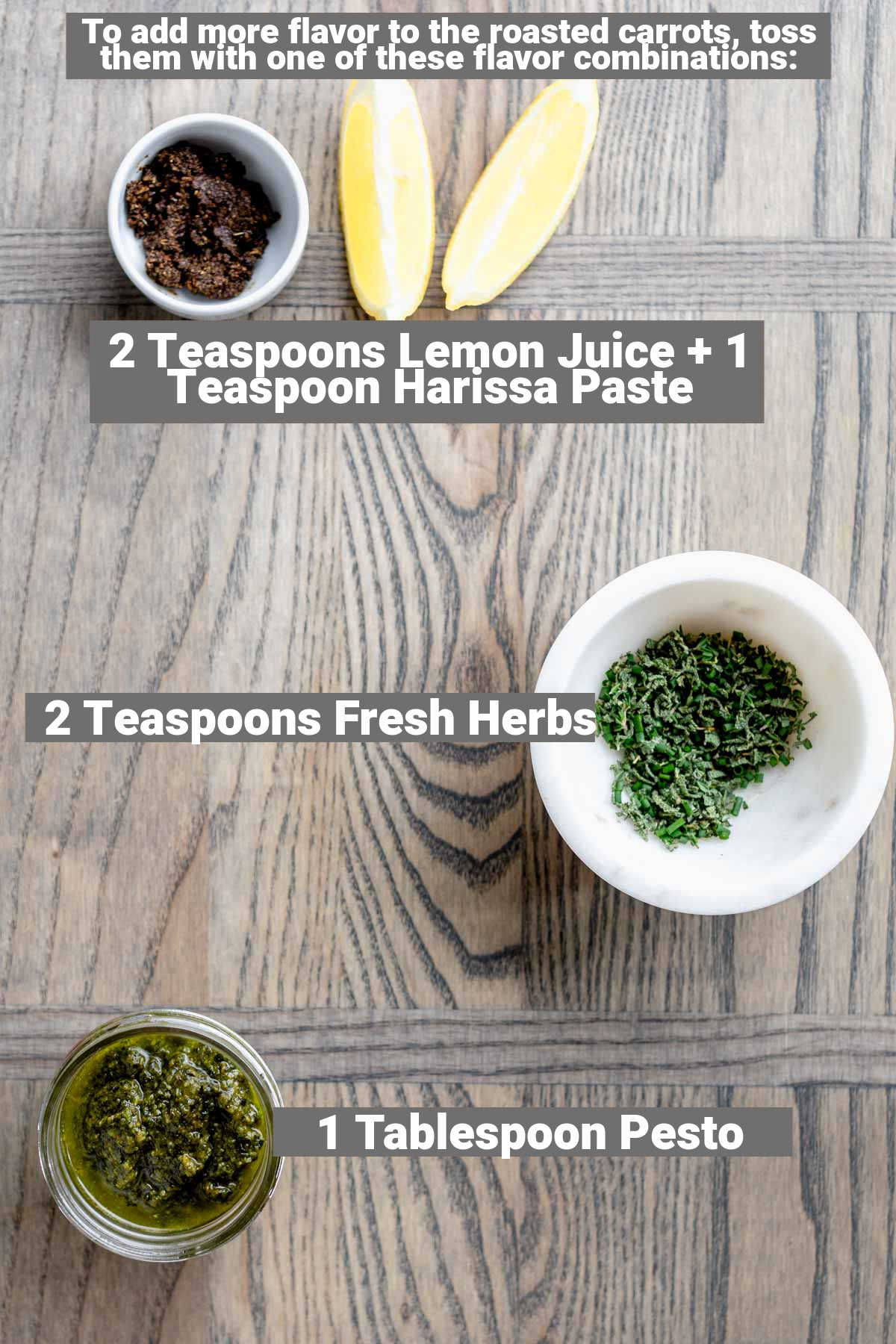
You can add more flavor to these roasted baby carrots and take them to a whole new level by adding on any of the following easy ingredient combinations. Simply roast the carrots as directed then toss them with the flavoring after they come out of the oven.
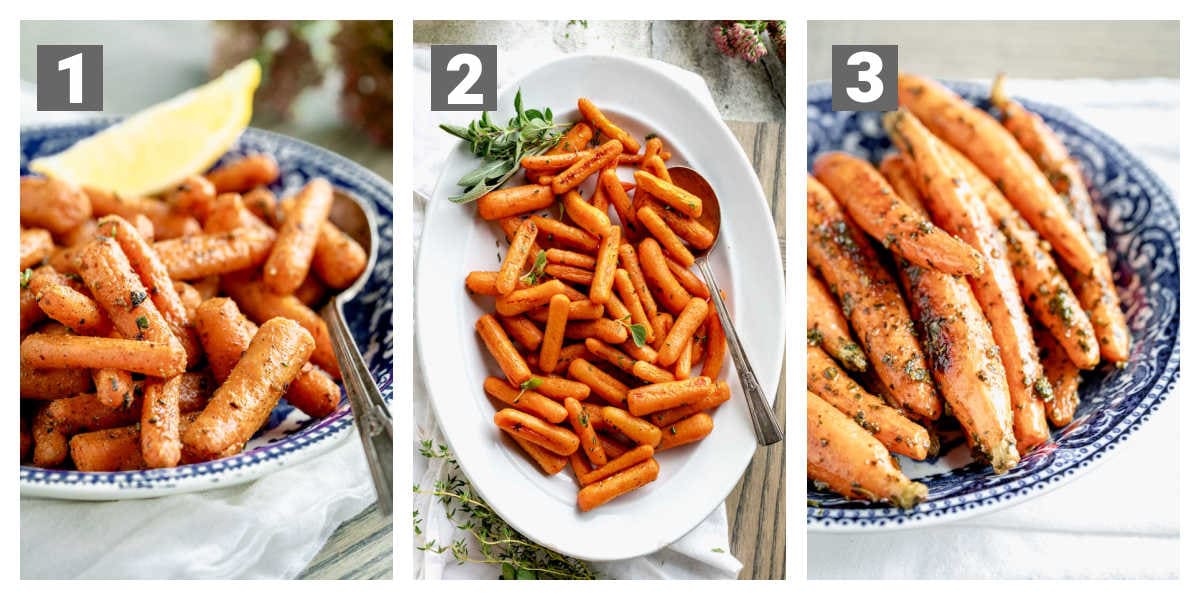
- Whisk together 2 teaspoons fresh lemon juice and 1 teaspoon harissa paste in a small bowl. When the carrots are done, toss the roasted carrots with the mixture and serve immediately.
- Once they are done cooking, sprinkle on 2 teaspoons chopped fresh herbs. We love dill or tarragon with roasted carrots, or try a combination of fresh rosemary, sage, thyme and chives.
- Another instant lift is to use fresh basil pesto! Add one tablespoon of pesto to the roasted carrots and toss to coat!
Other ideas include adding on a drizzle of balsamic vinegar or maple syrup to bring out their natural sweetness. Feel free to get creative. There are so many ways to add so much flavor with a few simple dashes of this or that!
FAQs and Expert Tips to Make This Recipe Perfectly
What Is The Difference Between Baby-Cut Carrots and Baby Carrots?

Baby Cut Carrots
Baby-cut carrots are actually made from full-size fresh carrots that have been cut into 2-inch lengths and then processed through a peeler and shaper to give them a relatively uniform shape and make them easy to snack and eat right from the bag. You can watch how they are harvested, peeled and shaped here!
They are about 2-inches in length and are peeled and shaped with rounded ends. These “Baby-Cut” or “Peeled Mini Carrots” are found in the grocery store in one or two-pound plastic bags and single-serving packets for snacking. They can also be labeled “peeled and cut carrots” sometimes.
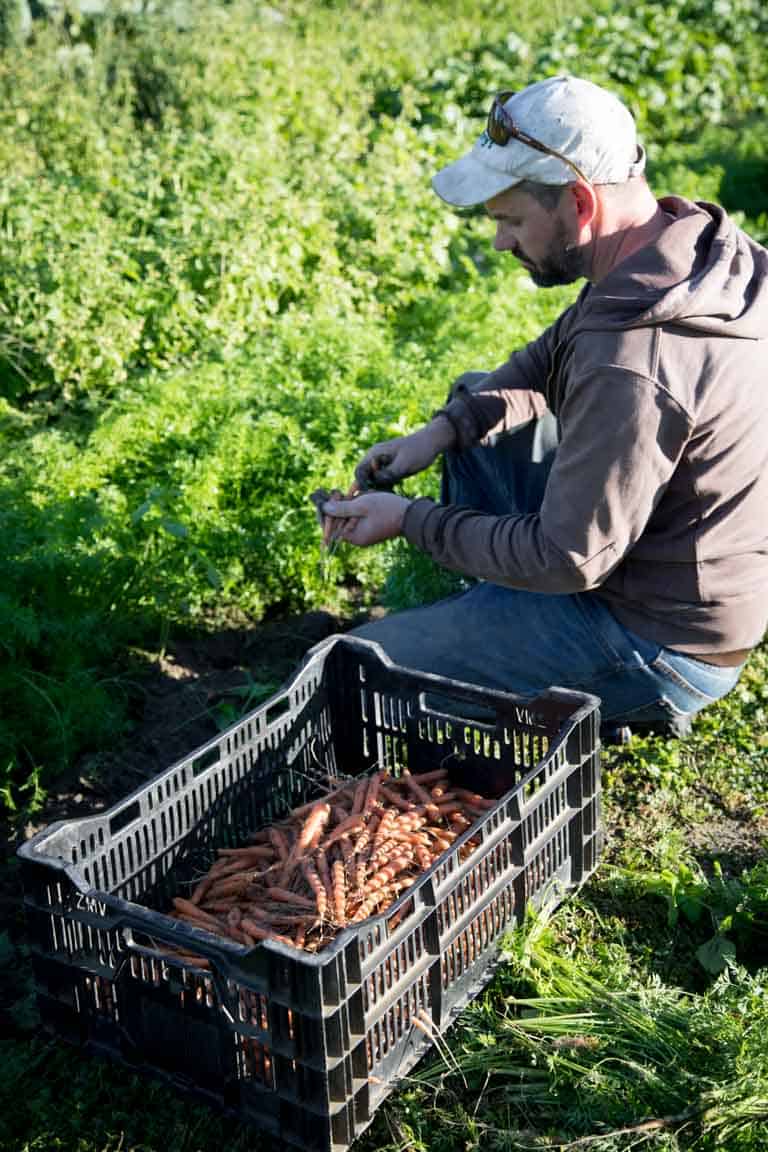
Baby Carrots
Actual unprocessed baby carrots are small immature whole carrots (see photo above.) They vary in size and can be sold with or without their tops. These tender young carrots are very sweet and can be more tender than larger fully-mature carrots. Since these real baby carrots are not peeled or shaped, they need to be washed, peeled and the tops trimmed before they are eaten or cooked.
1. Preheating the pan really helps to brown the carrots, so don’t skip that part.
2. Make sure to dry the baby carrots off if they are wet from the package. They are packed in filtered water to keep them from drying out. Moisture inhibits browning, so taking the moment to do this makes a difference!
3. Note that we use an oven with high heat (425 degrees) which is hot enough to brown them, but not too hot so that the natural sugars burn. Make sure that your oven is fully preheated.
4. You also want to make sure the carrots are spread in an even layer and the pan is not overcrowded.
There is an ongoing myth that baby carrots are bad for you. This is based on the fact that they are soaked in a chlorine water bath briefly to kill any pathogens. However, the levels of chlorine are very low and below the safety limit standards. Furthermore, they are rinsed afterward.
While pre-cut, peeled, and shaped carrots do create waste, the byproduct is used in animal food and juice. Another concern is that they are grown in undiversified farming practices which can harm soil health which is why we suggest when possible choosing real (immature) baby carrots is best. We also feel that the potential benefit and convenience that makes eating more vegetables over another less healthy, more processed or higher carbon foods offset these concerns.
You can make these in advance and chill them. Keep them covered. To reheat, we recommend heating them covered in the microwave until piping hot. For reheating the oven, they can dry out and become overcooked, so if you are planning to do this, undercook them slightly initially and reheat them in a baking dish covered with aluminum foil.
Serving Suggestions
Here are some main dishes that are great with roasted baby carrots:
- For a special holiday meal, this Maple Brined Roasted Pork Loin with Apple Chutney would pair beautifully with the sweet tender carrots.
- Another idea for the holiday season or for a special occasion is to pair them with this recipe for Beef Tenderloin Steaks with Mushrooms.
- For a super easy kid-friendly dinner that the entire family will love, try this Balsamic Sheet Pan Italian Chicken as a main course. It can cook on another rack in the oven at the same time!

More Carrot Recipes To Try
- This Maple Glazed Carrot recipe is from my cookbook, and they are coated with a beautiful glaze that’s both saavory and sweet. It is another great holiday side dish.
- This recipe for Roasted Carrots and Onions is another variation to try.
- Our Grilled Carrots with lemon, harissa and mint are great way to cook real baby carrots.
- Our Carrot and Parsnip Mash is a sweet and savory alternative to mashed potatoes.
- This Carrot and Radish salad and this shredded Carrot Salad with Lemon are two great ways to serve raw carrots.
- Our Moroccan Carrots and also these Hot Moroccan Carrots are two sides to try if you like a lot of flavor!
Thanks so much for reading. If you are new here you may want to sign up for my free weekly email newsletter for healthy recipes delivered right to your inbox. Or follow me on Instagram. If you make this recipe, please come back and leave a star rating and review! It is very appreciated. Happy Cooking! ~Katie
Print
Roasted Baby Carrots Recipe
- Author: Katie Webster
- Prep Time: 5 minutes
- Cook Time: 25 minutes
- Total Time: 35 minutes
- Yield: 3 cups
- Category: Side Dish
- Method: Oven
- Cuisine: American
Description
If you are looking for a super-easy way to turn baby carrots into a family-friendly side dish, then this recipe for Roasted Baby Carrots is your answer.
Ingredients
- Place rack in the middle of oven along with a large, rimmed baking sheet. Preheat oven to 425’F.
- Pat the carrots dry to remove any excess moisture. Toss the carrots with oil, salt and pepper.
- Spread the carrots out onto the pan. Roast, stirring once or twice until just tender, 18 to 20 minutes.
Instructions
Ingredient Note: Whole baby carrots with tops can be substituted for peeled baby cut carrots. Purchase 1 bunch (about 1 ¼ – 1 ½ pounds) then peel and trim tops to about 1 inch before roasting. Roast for 20 to 25 minutes depending on the size and thickness of the carrots. If carrots are large (more than about 1 inch in diameter), slice in half lengthwise.
Notes
Variations To Try
After the carrots come out of the oven you can flavor them with one of these ideas:
- Lemon Harissa: Whisk together 2 teaspoons fresh lemon juice and 1 teaspoon harissa paste in the bowl. When the carrots are done, toss the roasted carrots with mixture and serve immediately.
- Herbs: Once they are done cooking, sprinkle on 2 teaspoons chopped herbs. We love dill or tarragon with roasted carrots, or try a combination of shage, thyme and chives.
- Pesto: Another instant lift is to use fresh basil pesto! Add one tablespoon of pesto to the roasted carrots and toss to coat!
Nutrition
- Serving Size: 3/4 cup
- Calories: 79
- Sugar: 5 g
- Sodium: 224 mg
- Fat: 4 g
- Carbohydrates: 11 g
- Fiber: 3 g
- Protein: 1 g
